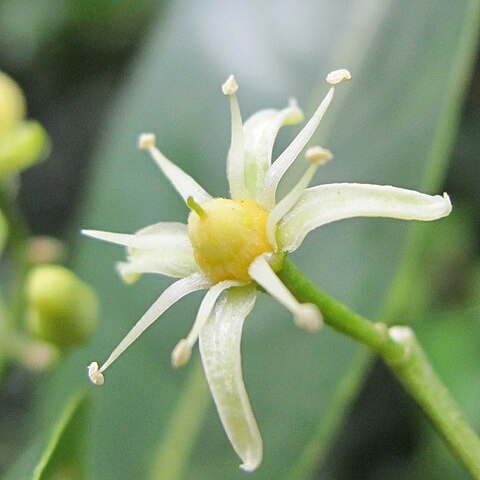A small evergreen tree. It grows up to 8-20 m high. The trunk can be 15-20 cm across. The trunk branches early. The leaves have one leaflet. The leaves are opposite and narrowly oblong. They are 6-15 cm long by 3-6 cm wide. The flowers are greenish-yellow and 5-8 mm across. The fruit are pear shaped and 8-10 mm long by 6-8 mm wide. They are greenish-yellow and succulent. They have a good flavour. They have a single stone with 3-5 seeds.


